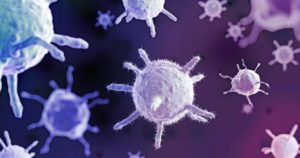The difference between cleaning and disinfecting surfaces
(and why you should do both)
There are a lot of reasons to focus on cleaning and disinfecting right now. Temperatures are dropping, the holidays are quickly approaching and germs and viruses are out in full force. What can you do to stay healthy? It’s all about eliminating germs and viruses before they have a chance to spread and infect.
But, when it comes to understanding how to clean to prevent the spread of viruses, there’s a lot of confusion. It turns out that it takes a combination of cleaning and disinfecting—which despite typically being lumped together, mean two different things.
What is the difference between cleaning and disinfecting?
Whether you’re wiping down a counter or scrubbing a sink, you think you’re getting rid of all the ickiness that can make you sick. But that’s not necessarily true. Here’s how the Centers for Disease Control and Prevention (CDC) distinguishes between cleaning and disinfecting:
- Cleaning involves using soap and water to physically remove germs, dirt and impurities from surfaces.
- Disinfecting involves using chemicals to kill germs on surfaces or objects.
This distinction is important when trying to defend yourself and your household against sickness.
Why do I need to clean and disinfect?
This time of year especially, our immune systems are inundated with all sorts of illness-causes viruses. To give your immune system a fighting chance, it’s important to take steps to remove and kill germs and viruses in your home.
How to clean and disinfect correctly to prevent illness
Step 1: Clean first, then disinfect
For all objects and surfaces, remove dirt and germs first. Follow up with a disinfectant to ensure the best protection for yourself and your household.
For hard/non-porous surfaces
Start by washing the surfaces of things like countertops, desks, coffee tables and your refrigerator with a multipurpose cleaner to remove germs and dirt. To kill any remaining germs, follow up with an EPA-registered disinfectant,—it will state it on the label—of a diluted bleach solution or alcohol solution with at least 70% alcohol.
For soft/porous surfaces
For items in your home like carpeting, rugs, drapes and furniture; start by removing any visible dirt and debris. Then, follow up with an EPA-registered disinfectant approved for porous surfaces, like Lysol Laundry Sanitizer or Oxiclean. Always make sure to follow the manufacturer’s instructions.
For electronics
Think about how often you touch your phone, tablet, keyboard and mouse! Electronics are hotbeds for germs. For these items, make sure to check the manufacturer’s instructions for cleaning and disinfecting. If specific cleaning instructions aren’t available, use an alcohol-based spray or disinfecting wipes.

Oh-So Quick Tip
“Closely review the instructions on cleaning wipes! You may need to use more than one wipe to ensure that a surface or item is fully disinfected."
For linens, clothing and other laundered items
Wash garments like bedding, clothing and dish towels at the warmest appropriate water setting. To avoid aerosolizing viruses, avoid shaking laundry while loading it into your washing machine. Don’t forget to frequently disinfect laundry hampers and baskets. To make cleaning and disinfecting these items easier, use washable or disposable liners and toss them in with the last load.
For all cleaning and disinfecting jobs, be sure to read and closely follow the instructions on the label. Some products have different requirements for cleaning versus disinfecting. For example, some disinfectants require the product to remain on the surface for a certain period of time.
Step 2: Routinely clean and disinfect high-touch surfaces
We’re talking doorknobs, light switches, faucets, countertops, drawer pulls—even your keyboard and cellphone. It’s a good idea to frequently clean and disinfect anything that members of your household touch multiple times a day. This is especially important if you work outside the home or have kids in daycare or school who are bringing germs and viruses home.
Step 3: Handle with care
When working with dirty or germy surfaces, take steps to protect against cleaning product-related injuries and the potential spread of viruses. To prevent injury or irritation from fumes or skin contact, wear disposable gloves and a mask when working with bleach or other chemical solutions.
Don’t have gloves or a mask? Cut down on your exposure to cleaning and disinfecting solutions by opening windows and doors to promote ventilation. And, whether you use gloves or not, take care not to touch your eyes, nose, mouth or face while using cleaning products. When you finish cleaning and disinfecting, wash your hands and store products in a safe place where children and pets can’t get into them.
Online care when sickness strikes
Sometimes—despite your best cleaning and disinfecting efforts—viruses win. When congestion, fevers and coughs hit your household, we’re here. Get online care at Virtuwell.
Share this post
Do you know someone who could use a simple & affordable healthcare option?

